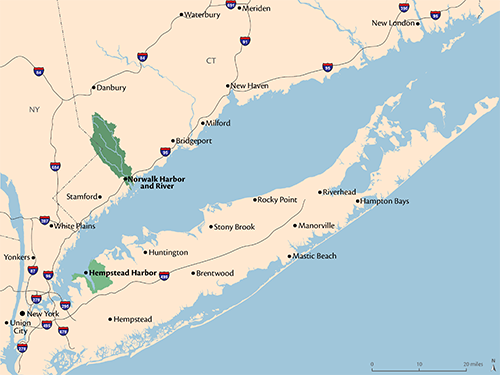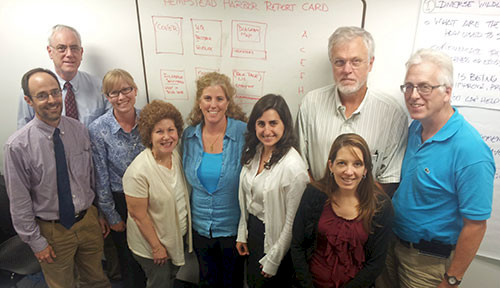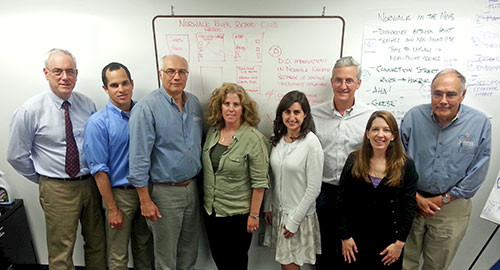Building Report Cards to Support Community-based Monitoring
Bill Nuttle ·An interest to support community-based monitoring efforts around Long Island Sound motivates IAN’s work to develop a set of ecosystem report cards for that region. Long Island Sound is an estuarine embayment on the northeast coast of the United States, located directly east of New York City. The western portion of the Sound connects with the East River and New York harbor. The north shore of the Sound is a densely developed urban and suburban area, and the south shore of the Sound is lined with towns and villages, which trace their roots back to the earliest Dutch and English colonial settlers.
The environmental problems affecting the surrounding communities reflect those of Long Island Sound as a whole – eutrophication from nutrient enrichment, pollution from industry, wastewater and storm runoff, and now climate change. These communities are changing. In some cases, urban and suburban development is intensifying, and in others industries in decline are being replaced by other uses of the shorefront. These changes provide both the opportunity and impetus for communities to seek solutions to their environmental problems.

Community-based monitoring programs play a key role in local efforts to solve environmental problems. During the first week of July, an IAN team of Alex Fries, Caroline Wicks, and I met with the leaders of community-based monitoring from Hempstead Harbor, NY and from the Norwalk River and harbor in Norwalk, CT. These are two of the communities we visited on our Long Island Sound listening tour in March. The purpose of these meetings was to begin building environmental report cards for these two embayments of Long Island Sound based on data collected by the community-based monitoring groups.

The Coalition to Save Hempstead Harbor has been monitoring water quality and wildlife since about 1990. The Coalition was formed in response to signs of general environmental degradation, and since 1995, its monitoring activities have been supported by the Hempstead Harbor Protection Committee, made up of the nine municipalities in the watershed, as part of a coordinated effort to clean up the harbor. The community-based monitoring program scored a major success in 2012 when shellfish beds, which had been closed to harvesting for forty years, were reopened based an improvement in water quality demonstrated by the Coalition’s monitoring data. Today, people use Hempstead Harbor for swimming and recreational boating. The Coalition sees its monitoring program as a way to renew people’s interest in Hempstead Harbor and Long Island Sound.
Harbor Watch has been monitoring water quality along the Norwalk River and in Norwalk harbor for the past sixteen years. Harbor Watch is a program of the Earthplace nature discovery center, which conducts a variety of programs that put people in touch with the natural environment. The Harbor Watch monitoring program annually recruits student volunteers to assist with monitoring and clean-up activities, and for some this experience has opened the path to a career in environmental protection. Harbor Watch has been effective in working with local government agencies to pinpoint and correct failing septic systems and problems in sewers and storm water drainage systems. In January 2014, the EPA cited the success of the Harbor Watch program in achieving improvements in water quality that resulted in removing the “impaired waters” designation from portions of the Norwalk River.

IAN’s work to develop report cards for Hempstead Harbor and Norwalk River is part of a larger effort to support similar community-based monitoring programs throughout the Long Island. Groups doing community-based monitoring face challenges in getting the expertise needed to set up and run a credible monitoring program and in disseminating results to a broad audience. Our work addresses both of these challenges; however discussions at the meetings last week focused on how these groups can use an environmental report card to connect better with their audience. This comes down to building stories into the report cards. As we listened to all the stories from Hempstead Harbor and Norwalk River, I could not help but be inspired by the dedication and accomplishments of these two community groups.

